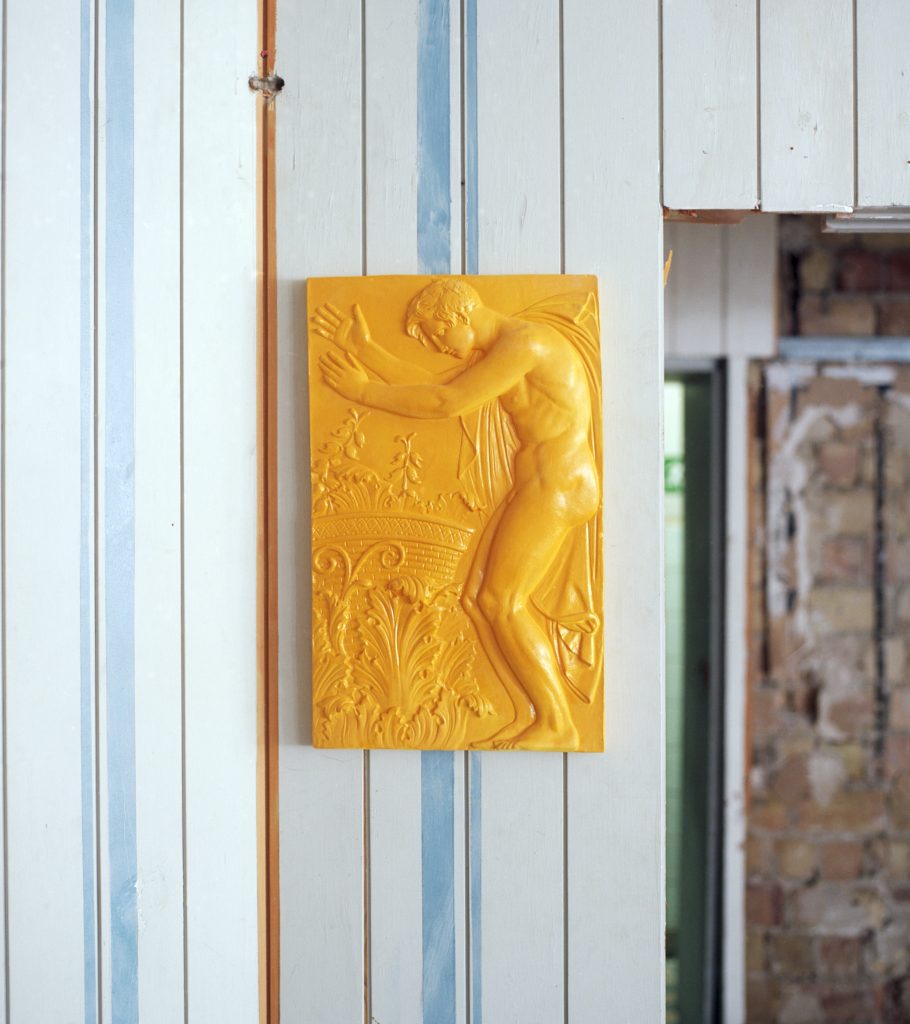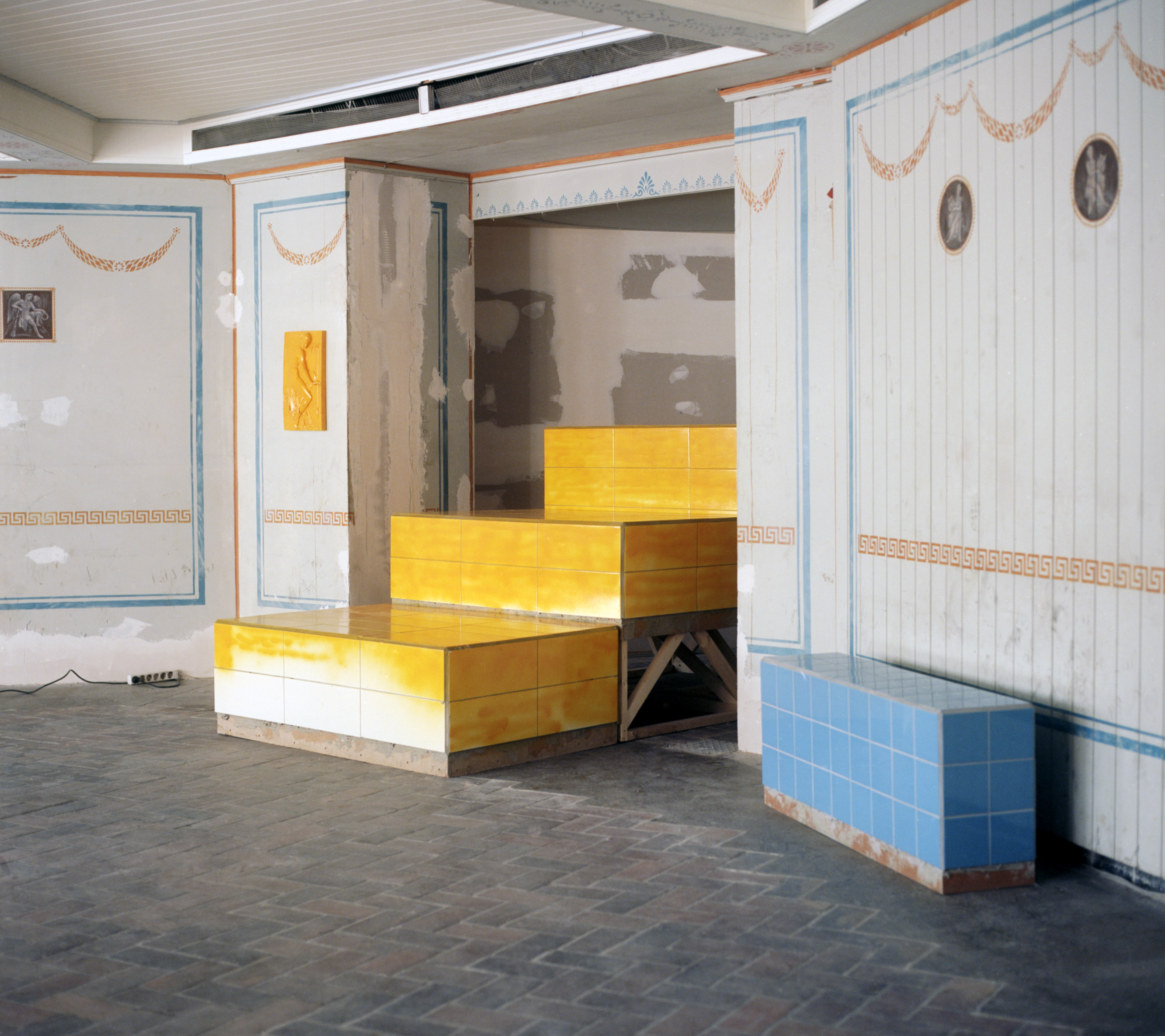#LIMONI: SCHINKEL KLAUSE | CALLA HENKEL & MAX PITEGOFF
Schinkel Klause (2016) is the site specific intervention made by Calla Henkel and Max Pitegoff for Schinkel Pavilon in Berlin. The title already presents itself as a metalinguistic game that makes the trompe l’oeil the main focus of the artistic duo’s intervention. Schinkel Klause refers to the building which during the GDR housed a restaurant and which is now one of the exhibition venues of Schinkel Pavilon: the artists, taking up its name, create a temporal reference to this place, connoting their installation under the sign of illusion.
Calla Henkel and Max Pitegoff set up a series of objects and representations within the space: yellow wooden blocks become hypothetical seats or stalls for an invisible audience, plastic sheeting is placed between the doors and on other boxes to convey the idea construction sites and works in progress, speakers and musical instruments are arranged, almost hidden, inside the space and finally a series of large-format photographic prints are hung like curtains, on which the interiors of the building are shown, mirroring the space. To increase the illusion and the specific characterization of the architectural intervention of the duo a series of external lighting maintain a constant condition of illumination, so as to make it seem that time has stopped. This immense intervention focused on details generates a temporal suspension inside the place that now seems to be waiting for the passage of humans to be able to activate: what changes its nature are a series of performances and concerts that Calla and Max have programmed in collaboration with other artists.
The hyper-realistic and decadent theater that arises from this intervention is the container of an expanding imaginary: the environmental installation based on the concept of the trompe l’oeil becomes the narrative strategy to bring back a characteristic of the host place together with a new vision that retains in itself the practice of the artistic duo. Playing between hiding and showing, Schinkel Klause is a chamber of mirrors in which the logic of architecture is reshuffled to dwell on the fracture between what is real and what is represented.
Wandering through the dusty and bare rooms, one can glimpse, hanged on a wall, a representation of Kalimachos, a Greek poet famous for the brevity of his poems and for his attention to the labor lime. Chosen as a model, the poet expresses the care and attention that Calla Henkel and Max Pitegoff demonstrate in rethinking spaces in an attempt to generate new attention in the eyes of the observer. Kalimachos was also known for his experimentations and innovations very focused on the writing practice itself and for this reason his artistic production is also defined as metalinguistic: Schinkel Klause, inheriting this model, defines itself as a metalinguistic poem in which words have given way to architectural elements, to the arrangement of objects and the lighting system designed ad hoc for the Berlin space. Art deceives itself by generating a metacritical discourse on the very mechanism of representation.
Calla Henkel & Max Pitegoff
Narzissengelb (2016)
Wood, tiles, cement and paint, installation view from Schinkel Klause, Schinkel Pavillon, 2016, with performance by Hanna Weinberger. Courtesy the artists and Galerie Isabella Bortolozzi. Photo: the artist.
01/04/2023

Calla Henkel & Max Pitegoff, Kalimachos (Narzissengelb), 2016, Lacquer on plaster.
Installation view from Schinkel Klause, Schinkel Pavillon, 2016, with performance by Hannah Weinberger.
Courtesy the artists and Galerie Isabella Bortolozzi. Photo: © the artists.

